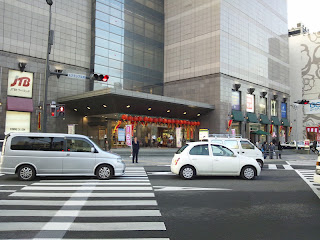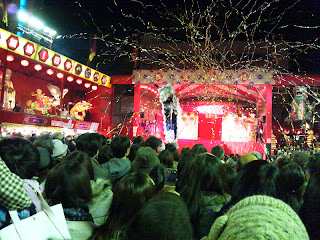Shinto was born out of the need to explain death and fertility, to organize livelihood and plan group activities. It is a religion born of observing the "signs of the times", and of course for all those unexplained events we have a pantheon of deities that arise from nature and deceased clan members. One unique characteristic of Shinto is no idols, "gods" are not something the human mind can perceive and so to try to make an image of one is just foolish, they do have Koma-Inu though, guardian dogs, if you've seen pictures from the shrines you may have noticed one always has it's mouth open, the "ah" sound of the beginning of the Japanese syllabary, and one with it's mouth closed, the "n" sound of the end of the Japanese syllabary, this represents the beginning and the end. When you go to a Shinto Shrine, which is a weekly ritual for devote believers, though many only go on the big holidays, you first bow when entering the gate to show respect and then proceed to the water basin where you scoop water out and wash your hands and drink some, from your hand not the ladle, to purify your hands and mouth; the "purifiers" in Shinto are salt, water, and paper. After purifying yourself you walk up the steps to the front of the shrine where you bow, clap, bow, clap twice, and bow again, some shrines also have a bell that you can ring, this is done after the bowing and clapping. All this is done to get the attention of the Shinto deity who resides at a given shrine. All shrines have at least one deity present, Suwa shrine in Nagasaki has 3, one clan, Suwa clan, two nature, fire, ocean/sea. You then offer your prayer/petition silently. You can also buy special paper and write it down and tie it to this rack that is off to the side. Money can be thrown in the box at the front and is even set at the feet of the Koma-Inu, usually big request garner more money, but there is no hard rule here, it's just this idea that if you really want something you want the god(s) to look favorably on you. Then you leave, you can buy charms that help provide good this and that and for a small fee the priests will bless anything you want them to for protection. These charms wear out after a year or so too, so there's always a high volume of sales during big holidays, usually on New Year's, it's like Christmas or Easter in a Christian Church for a Shinto Shrine in terms of attendance. At it's most basic level Shinto is about purification and good fortune.
That said Setsubun is a festival to start Spring by pushing out bad luck and bringing in good luck. This was once the New Year's Eve when Japan worked on a Lunar calendar before the rise of western influence. This is cultivation of luck is achieved at Setsubun by Mamemaki, or bean throwing. Dried soy beans are tossed either out the door or at a family member wearing an Oni mask (Oni are like ogres, while sometimes translated as "demon", they are not "spirit beings" like western demons, but rather monsters), while chanting Oni wa soto, fuku wa uchi, "oni out, good luck in". This is rarely practiced in homes anymore but is done at the shrines as you can see in this video:
This was a smaller shrine that I attended because they had more traditional events than Suwa Shrine. One of which was serving Zenzai, a sweet bean soup. It actually tastes a lot like hot cocoa. I was also able to witness some entertainment, fan dances and singing.
It was interesting to see people gathered around a modest bonfire at the shrine. They seemed to be throwing things from New Year's into the fire, my guess would be charms that were temporary like the Kadomatsu. For dinner that night I was served an uncut sushi roll and was told I should face the "lucky" direction for this year when eating it, I think it was north-north-west this year? Anyway, my host mother photographed it for me.
Other than that it was a normal night. Many festivals are small events that may no even be celebrated at the homes, but the shrines and temples keep most of these alive and are actually a source of income for those wishing to see or participate in parts of Japan's cultural history.
I'll leave you with a few other photos I took while at the small shrine that night.
These two photos are from a very small shrine I found looking for the one I went to
The stand there was selling lucky food like "Big Luck Strawberry Mochi"
The first here was smaller, but people were gathered around it throwing things in and trying to stay warm since it was near freezing outside that night.
Like all Shinto Festivals it is often a time to go before the gods and offer up prayers


































































